Intel Core i9-10850K Review: The Real Intel Flagship
by Dr. Ian Cutress on January 4, 2021 9:00 AM EST- Posted in
- CPUs
- Intel
- Core
- Z490
- 10th Gen Core
- Comet Lake
- LGA1200
- i9-10850K
CPU Tests: Legacy and Web
In order to gather data to compare with older benchmarks, we are still keeping a number of tests under our ‘legacy’ section. This includes all the former major versions of CineBench (R15, R11.5, R10) as well as x264 HD 3.0 and the first very naïve version of 3DPM v2.1. We won’t be transferring the data over from the old testing into Bench, otherwise it would be populated with 200 CPUs with only one data point, so it will fill up as we test more CPUs like the others.
The other section here is our web tests.
Web Tests: Kraken, Octane, and Speedometer
Benchmarking using web tools is always a bit difficult. Browsers change almost daily, and the way the web is used changes even quicker. While there is some scope for advanced computational based benchmarks, most users care about responsiveness, which requires a strong back-end to work quickly to provide on the front-end. The benchmarks we chose for our web tests are essentially industry standards – at least once upon a time.
It should be noted that for each test, the browser is closed and re-opened a new with a fresh cache. We use a fixed Chromium version for our tests with the update capabilities removed to ensure consistency.
Mozilla Kraken 1.1
Kraken is a 2010 benchmark from Mozilla and does a series of JavaScript tests. These tests are a little more involved than previous tests, looking at artificial intelligence, audio manipulation, image manipulation, json parsing, and cryptographic functions. The benchmark starts with an initial download of data for the audio and imaging, and then runs through 10 times giving a timed result.
We loop through the 10-run test four times (so that’s a total of 40 runs), and average the four end-results. The result is given as time to complete the test, and we’re reaching a slow asymptotic limit with regards the highest IPC processors.
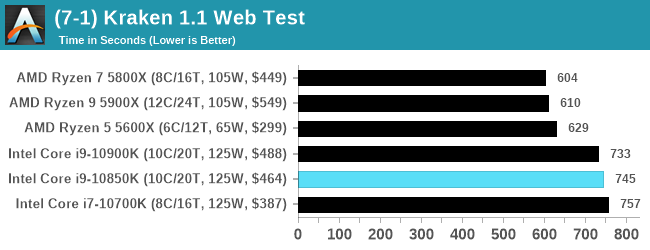
Google Octane 2.0
Our second test is also JavaScript based, but uses a lot more variation of newer JS techniques, such as object-oriented programming, kernel simulation, object creation/destruction, garbage collection, array manipulations, compiler latency and code execution.
Octane was developed after the discontinuation of other tests, with the goal of being more web-like than previous tests. It has been a popular benchmark, making it an obvious target for optimizations in the JavaScript engines. Ultimately it was retired in early 2017 due to this, although it is still widely used as a tool to determine general CPU performance in a number of web tasks.
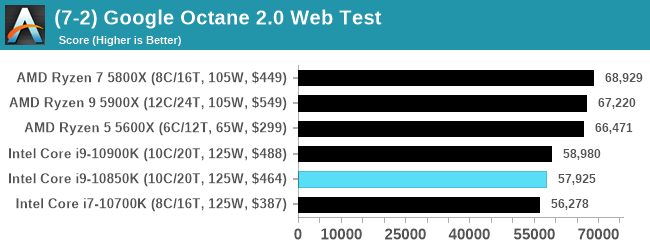
Speedometer 2: JavaScript Frameworks
Our newest web test is Speedometer 2, which is a test over a series of JavaScript frameworks to do three simple things: built a list, enable each item in the list, and remove the list. All the frameworks implement the same visual cues, but obviously apply them from different coding angles.
Our test goes through the list of frameworks, and produces a final score indicative of ‘rpm’, one of the benchmarks internal metrics.
We repeat over the benchmark for a dozen loops, taking the average of the last five.

Legacy Tests
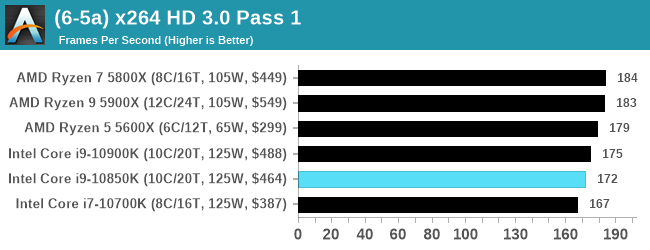
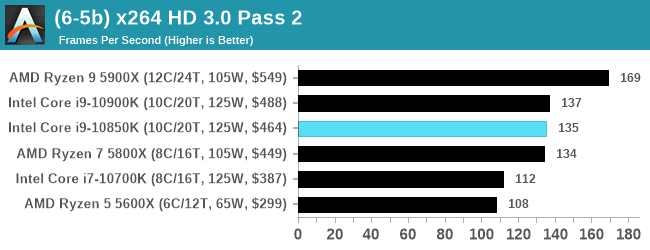
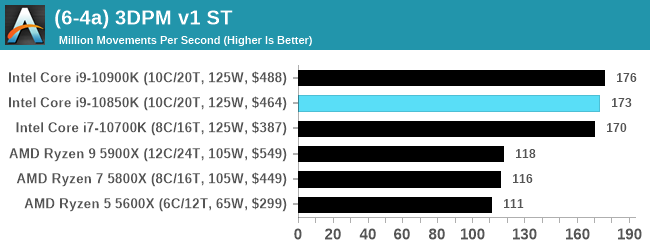
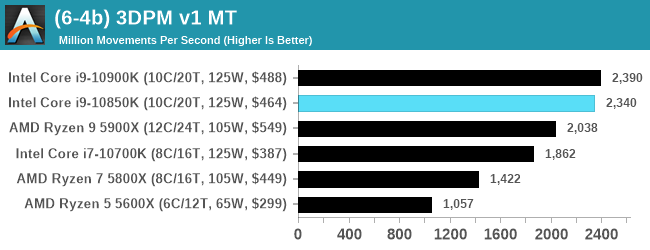

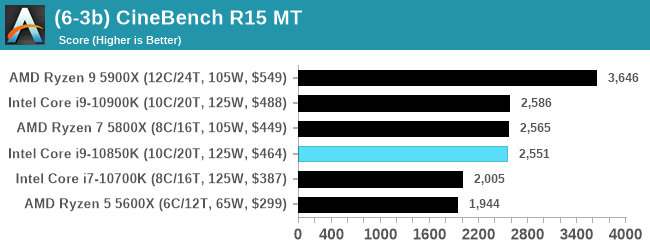




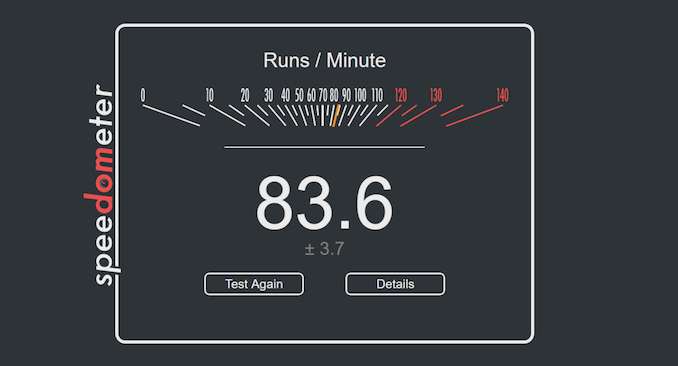








126 Comments
View All Comments
YB1064 - Monday, January 4, 2021 - link
Thermals look horrendous! 102 C even when throttled is bad. Even with water, I don't think you will see much improvement. Better have a chiller on hand!GeoffreyA - Monday, January 4, 2021 - link
The sun should buy a few million of these fellows. Will help a lot with temperature when sunspots get too cool.at_clucks - Monday, January 4, 2021 - link
Nooo, as the article puts it, it's "not as bad as it sounds". People just needlessly freak out when they processor FREAKING BOILS WATER on "an open test bed with a chunky copper cooler" and needing 270W at full load. But in reality it's just "more about thermal gradients inside the processor and how easily the thermals can move" so it's all good. I can feel the temps dropping just by reading these comforting words.I guess the only thing that can make a current gen Intel CPU look good is another current gen Intel CPU. Here's hoping that they get their act together for the next gen(s) or we'll keep having to read reviews where Intel competes against Intel as the only way to get some praise.
at_clucks - Monday, January 4, 2021 - link
Read the comment above as if there was an edit button to fix all the grammatical... inconsistencies.1_rick - Monday, January 4, 2021 - link
It's no worse than the article itself.Smell This - Monday, January 4, 2021 - link
as the article puts it, it's "not as bad as it sounds"_______________________________________
Sadly, the presentation makes it much worst. Bad enough smoked with the Ryzen 5900x ... there is little to no downward price pressure on an 18-month old AMD 3900x at $499.
Even worst --- 18 months ago the HEDT Intel 12/24 i9-79xxX was $1,190 and was slobber-knocked by the 3900x . . .
GeoffreyA - Wednesday, January 6, 2021 - link
"Here's hoping that they get their act together"Rocket Lake should cover the ground performance-wise, but it's going to be disastrous when it comes to power and heat. Would be nice to see Sunny Cove running on 7 or 5 nm, but I suspect even there, Zen 3 would use less power, owing to its more economical design.
powerarmour - Monday, January 4, 2021 - link
It's a genuinely horrible CPU compared to the competition, Intel have regressed so much on performance-per-watt that even Apple are stealing their lunch now.shelbystripes - Monday, January 4, 2021 - link
It’s embarrassing (for Intel) how easily Apple justified the Intel-to-ARM switch with the M1. Stagnation is a bitch.Operandi - Monday, January 4, 2021 - link
Part stagnation part major technological fumbles. Intel definitely played it safe on the architectural level but you could argue that was the right call given the state of the market. What is really killing them is the dropped ball on the fabrication front.Regardless though Apple's move to their own designs was going to happen even if Intel was stumbling all over the place, that move has been planned for over a decade.